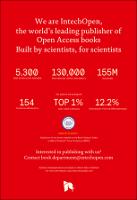Chapter From Cellulose Dissolution and Regeneration to Added Value Applications — Synergism Between Molecular Understanding and Material Development
Author(s)
Singh, Poonam
Duarte, Hugo
Alves, Luís
Antunes, Filipe
Le Moigne, Nicolas
Dormanns, Jan
Duchemin, Benoit
Staiger, Mark P.
Medronho, Bruno
Language
EnglishAbstract
Laser ablation (LA) and spark discharge (SD) techniques are commonly used for nanoparticle (NP) formation. The produced NPs have found numerous applications in such areas as electronics, biomedicine, textile production, etc. Previous studies provide us information about the amount of NPs, their size distribution, and possible applications. On one hand, the main advantage of the LA method is in the possibilities of changing laser parameters and background conditions and to ablate materials with complicated stoichiometry. On the other hand, the major advantage of the SD technique is in the possibility of using several facilities in parallel to increase the yield of nanoparticles. To optimize these processes, we consider different stages involved and analyze the resulting plasma and nanoparticle (NP) parameters. Based on the performed calculations, we analyze nanoparticle properties, such as mean size and mean density. The performed analysis (shows how the experimental conditions are connected with the resulted nanoparticle characteristics in agreement with several previous experiments. Cylindrical plasma column expansion and return are shown to govern primary nanoparticle formation in spark discharge, whereas hemispherical shock describes quite well this process for nanosecond laser ablation at atmospheric pressure. In addition, spark discharge leads to the oscillations in plasma properties, whereas monotonous behavior is characteristic for nanosecond laser ablation. Despite the difference in plasma density and time evolutions calculated for both phenomena, after well-defined delays, similar critical nuclei have been shown to be formed by both techniques. This result is attributed to the fact that whereas larger evaporation rate is typical for nanosecond laser ablation, a mixture of vapor and background gas determines the supersaturation in the case of spark.
Keywords
Nanoparticles, laser ablation, plasma, spark discharge, synthesis, modeling, size distribution, nucleation, aggregationDOI
10.5772/61402Publisher
InTechOpenPublisher website
https://www.intechopen.com/Publication date and place
2015Classification
Condensed matter physics (liquid state & solid state physics)


 Download
Download